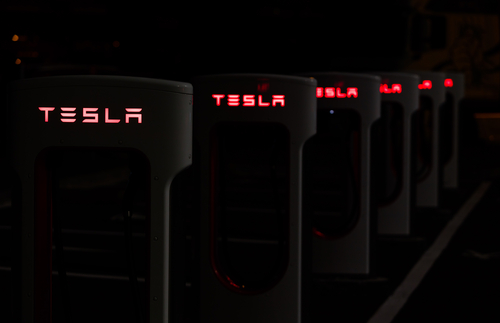Key Takeaways:
- Tesla delivered 497,000 vehicles in the third quarter, beating forecasts.
- Year-over-year deliveries rose by 7 percent, driven by U.S. buyers rushing to claim a $7,500 tax credit.
- Production reached 495,000 cars despite global supply chain challenges.
- Shares jumped after the strong report, but analysts warn of a possible slowdown in Q4 demand.
Tesla delivered 497,000 cars in the third quarter. This number topped most forecasts. In fact, deliveries climbed 7 percent compared to last year. Moreover, U.S. customers rushed to claim a $7,500 tax credit before it expired. As a result, Tesla avoided a major dip in sales. The company also managed to produce 495,000 vehicles despite facing global parts shortages. Consequently, shares rose after the announcement. However, some experts warn of weaker demand in the final quarter of the year.
Strong Demand Before Tax Credit End
Many buyers in America sped up their orders to enjoy the incentive. As the deadline approached, Tesla deliveries spiked sharply. People who had waited now moved fast. Therefore, the automaker saw record interest in its popular electric models. To illustrate, the Model 3 and Model Y made up most of the surge. Meanwhile, production teams worked hard to meet the sudden rise in orders. Although supply chains remained strained, they pushed output close to half a million cars.
Rising Tesla Deliveries Driven by Tax Credit Rush
Even with chip shortages and shipping delays, Tesla deliveries climbed. The key driver was the tax credit deadline. Buyers feared missing out on substantial savings. Thus, they placed orders early, boosting sales. In addition, Tesla streamlined factory processes to speed up builds. Consequently, production grew to almost match delivery totals. As a result, the vehicle inventory stayed low, reflecting brisk consumer appetite. Furthermore, Tesla’s flexible logistics network helped overcome shipping hurdles.
Production Challenges and Wins
Tesla faced hurdles in Q3. First, global supply chain disruptions limited component flow. Second, shipping costs rose sharply, squeezing profit margins. However, the company adapted by rerouting shipments and sourcing parts locally. Engineers tweaked assembly lines to cut downtime. They also added night shifts to increase output. Consequently, quarterly production reached 495,000 units. That figure sits just below the delivery count, reflecting strong factory performance. Furthermore, Tesla invested in energy and software upgrades, boosting overall efficiency.
Stock Reaction and Future Outlook
Following the delivery report, Tesla shares jumped. Investors cheered the better-than-expected results. Yet, analysts caution that Q4 may not match this pace. They point out that the tax credit boost has already passed. Therefore, demand could cool in the coming months. Moreover, price cuts in recent quarters might squeeze margins. Nevertheless, Tesla plans new plant expansions and fresh model launches. These moves could reignite buyer interest. Meanwhile, the company continues to refine its self-driving software. That innovation may drive future growth as well.
Risks Ahead for Tesla
Although Tesla deliveries hit a high mark, challenges remain. First, competition in the electric vehicle market has grown fierce. Legacy automakers now offer more EV models. Consequently, Tesla must defend its market share. Second, the end of tax incentives may slow new orders. Furthermore, rising interest rates can deter vehicle financing. Even so, part of Tesla’s success comes from its brand appeal. Loyal fans often wait months to get their new cars. In addition, Tesla’s charging network remains a top selling point. Therefore, the company still holds key advantages.
Balancing Growth with Profit
Tesla’s strategy involves balancing rapid growth with solid profits. In the third quarter, revenue rose alongside deliveries. Yet, squeezing production costs remains vital. The firm cut prices in many markets to boost sales. However, analysts note that deep cuts can hurt profit margins. To offset this, Tesla works on lowering battery costs and improving automation. In turn, these efforts could sustain higher profits even at lower selling prices. Moreover, software-based services like full self-driving may add new revenue streams over time.
Looking Ahead to Q4
As Tesla gears up for the final quarter, several factors could influence results. First, new factory ramps in Texas and Berlin might boost production. Yet, such ramps often face initial hiccups. Second, updated models or features could spark fresh orders. Third, global economic trends and consumer confidence will shape demand. For instance, inflation rates and interest rates may affect buyer budgets. Finally, government policies on EV incentives will play a key role. In short, Tesla aims to build on its Q3 momentum while preparing for a changing landscape.
Conclusion
Tesla deliveries surged in the third quarter, reaching a record 497,000 vehicles. This performance topped expectations and pushed shares higher. A rush to claim a $7,500 tax credit fueled much of the growth. Meanwhile, production reached 495,000 units despite supply chain struggles. However, analysts warn of potential demand weakness in Q4 without the tax credit boost. Looking ahead, Tesla must balance growth, competition, and profitability. Yet, strong brand loyalty and innovative technology may help the company stay ahead.
FAQs
What led to the surge in Tesla deliveries this quarter?
Buyers in the U.S. rushed to place orders before a $7,500 tax credit ended. This deadline created a spike in demand that boosted deliveries by 7 percent year over year.
How did Tesla manage production amid global challenges?
Tesla optimized factory lines, added shifts, and sourced parts locally. These steps helped reach 495,000 vehicles despite chip shortages and shipping delays.
Will Tesla deliveries stay high in the next quarter?
Experts warn that the end of the tax credit may cool demand. However, new factory openings and model updates could offset this slowdown.
How did investors react to Tesla’s Q3 delivery report?
Shares rose after Tesla announced strong delivery and production numbers. Still, analysts urge caution about potential demand drops in the coming months.

